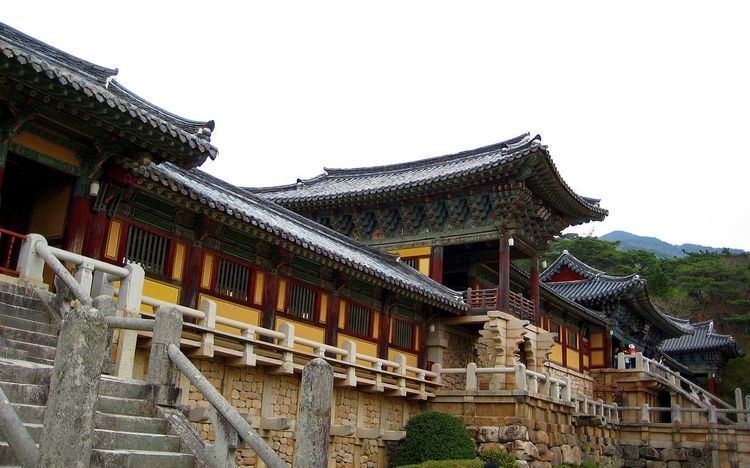Hangul 마한 Revised Romanization Mahan | Hanja 馬韓 McCune–Reischauer Mahan | |
 | ||
Mahan confederacy
Mahan ([ma.ɦan]) was a loose confederacy of statelets that existed from around the 1st century BC to 5th century AD in the southern Korean peninsula in the Chungcheong and Jeolla provinces. Arising out of the confluence of Gojoseon migration and the Jin state federation, Mahan was one of the Samhan ("Three Hans"), along with Byeonhan and Jinhan. Baekje began as a member statelet, but later overtook all of Mahan and became one of the Three Kingdoms of Korea.
Contents
History
Mahan probably developed from the existing bronze society of third to second centuries BC, continuing to absorb migration from the north in subsequent centuries. King Jun of the kingdom of Gojoseon in northern Korea, having lost the throne to Wiman, fled to the state of Jin state in southern Korea around 194 - 180 BC. He and his followers are thought to have established a base within Jin territory. It is not certain whether Mahan conquered or arose out of this entity, but Mahan was certainly influenced by this influx of northern culture.
Further migration followed the fall of Gojoseon and establishment of the Chinese commanderies in the Liaoning region in 108 BC. It is described in the Chinese chronicle San Guo Zhi and the much later Korean chronicles Samguk Yusa and Samguk Sagi.
In the 1st century AD, the Wolji/Mokji (月支/目支) state, that formed and led Mahan confederacy, was defeated in struggles with Baekje, another member of Mahan, and consequently losing whole region of present-day Han River basin. But the San Guo Zhi recorded the Han state fallen in struggles with the Lelang Commandery and Daifang Commandery in the 246. Under continuous pressure from Baekje, only 20 statelets of Mahan confederacy survived until the late 3rd century. Baekje eventually absorbed or conquered all of Mahan by the 5th century, growing into one of the Three Kingdoms of Korea, along with Silla and Goguryeo.
Politics
Kings of Mahan occasionally called themselves "King of Jin," referring to the earlier Jin state and asserting nominal sovereignty over all of Samhan. A wealth of bronze artifacts and production facilities indicate that Mahan was probably the earliest developed of the three Hans. At its height, Mahan covered much of the Han River Basin and the modern-day provinces of Gyeonggi, Chungcheong, and Jeolla, although political unity was strongest led by Mokji state (목지국, 目支國) in Cheonan, Chungcheong.
Legacy
Goryeo historians identified Mahan with Goguryeo, which was supported by their works like Samguk Sagi, Samguk Yusa and Jewang Ungi. That historical view was previously given by Choe Chiwon, a noted Confucian scholar and Historian in the late of the Silla. Apart from the geographical location of Mahan, the Chinese historical record History of Song defines the ethnical origin of the Jeong-an kingdom, a successor state of Balhae, as Mahan.
In the late Joseon period, that historical notion came under criticism by early Silhak scholar Han Baek-gyeom, who emphasized the linkage between Mahan and Baekje in terms of the geographical location.
Statelets
According to the San Guo Zhi, Mahan consisted of 54 statelets of up to ten thousand families each:
